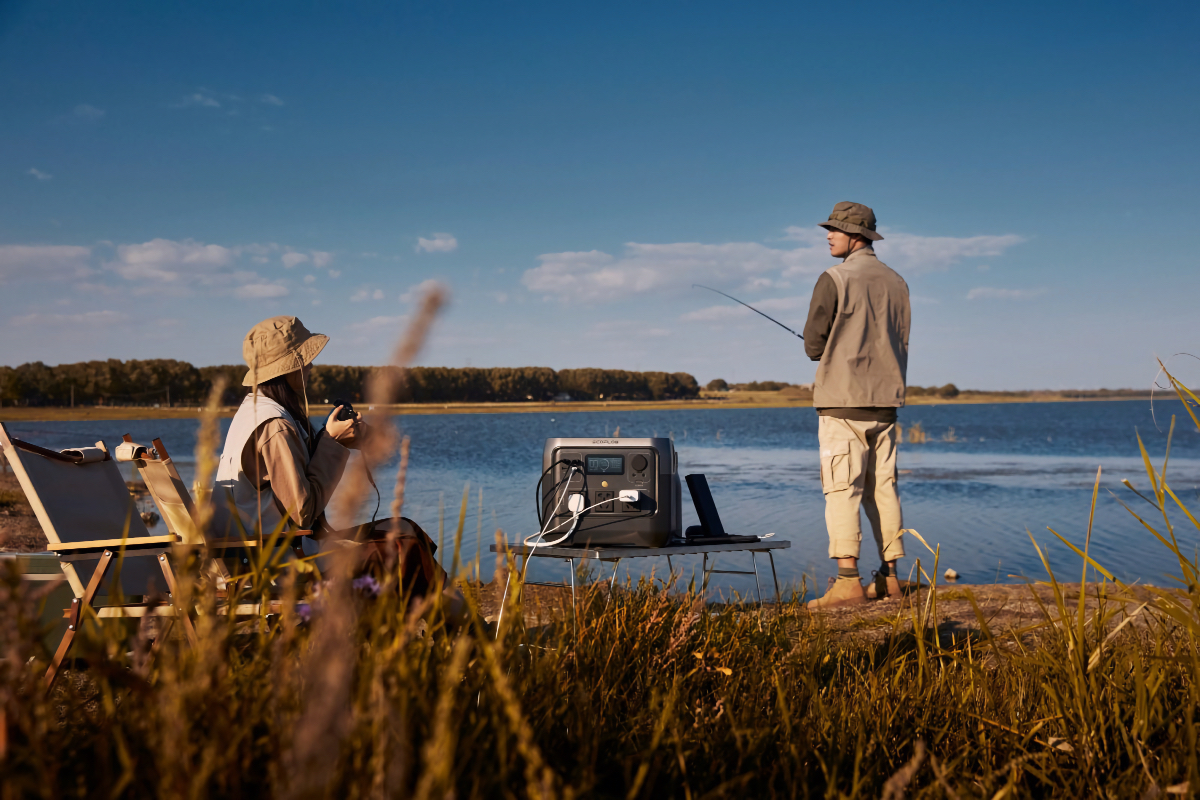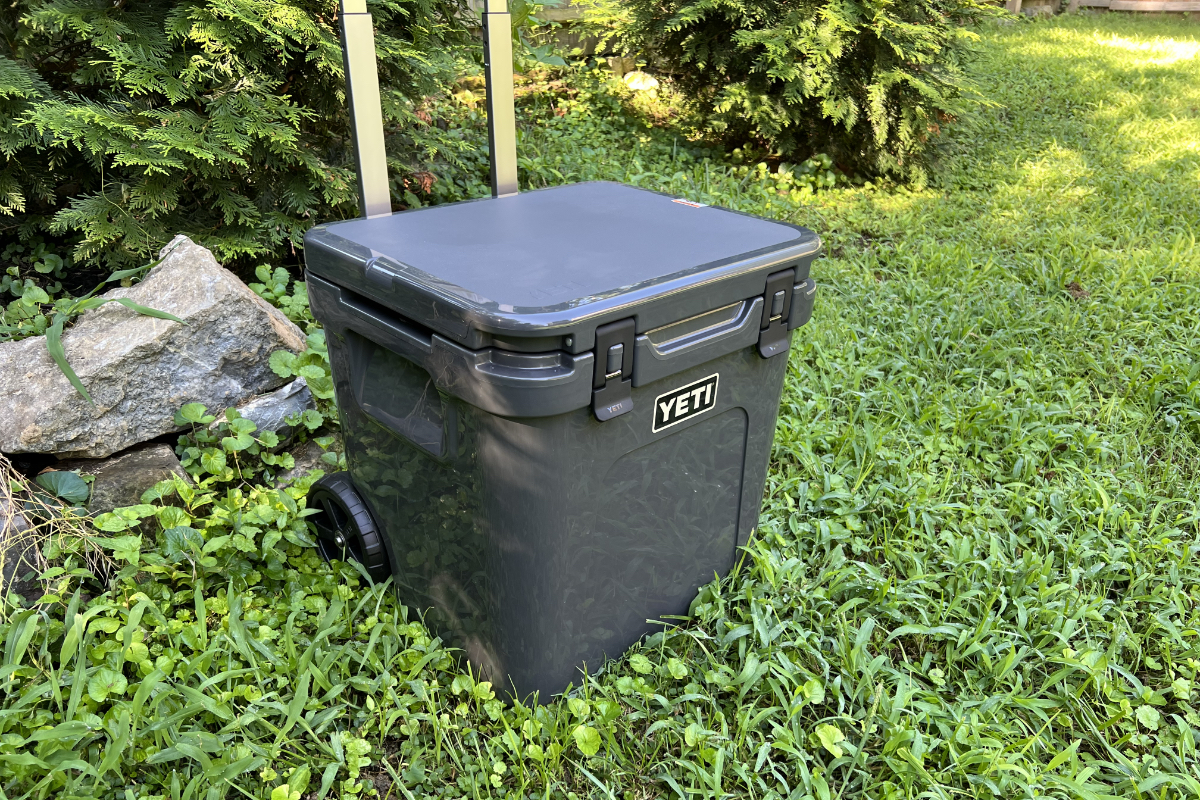The Best Portable Power Stations for Use While RVing
These Devices Offer On-the-Go Power without Creating Noise or Noxious Fumes
Image Caption: Image Courtesy of Jackery
Gas powered-generators have been a source of electricity at remote campsites for decades. Depending on the model, these devices can create enough power to run even a large RV, keeping appliances, HVAC systems, lights, and other items functioning while living off the grid. But those same generators also produce plenty of noise while also giving off noxious fumes. This has prompted the state of California to institute a ban on the sale of those products and sent many RVers in search of quieter, more eco-friendly options.
Those alternatives come in the form of portable power stations, which use large lithium batteries to store power for use on the go. These devices are small and lightweight compared to gas-powered models and have the benefit of being free from both noise and emissions. But, they can be more challenging to keep charged while in the field, and most don’t supply as much power as a traditional generator.
Still, thanks to larger battery packs and more efficient solar panels, portable power stations have become viable options for use while RVing. Whether it’s a primary source of power or a backup for your main generator, a power station can be a handy item to have at your disposal. They can be useful for charging smaller devices without having to start a gas generator, for instance, and because they operate silently, they don’t disturb other campers.
If you’ve been considering purchasing one of these units for your next adventure, here are a few things to know before you buy.
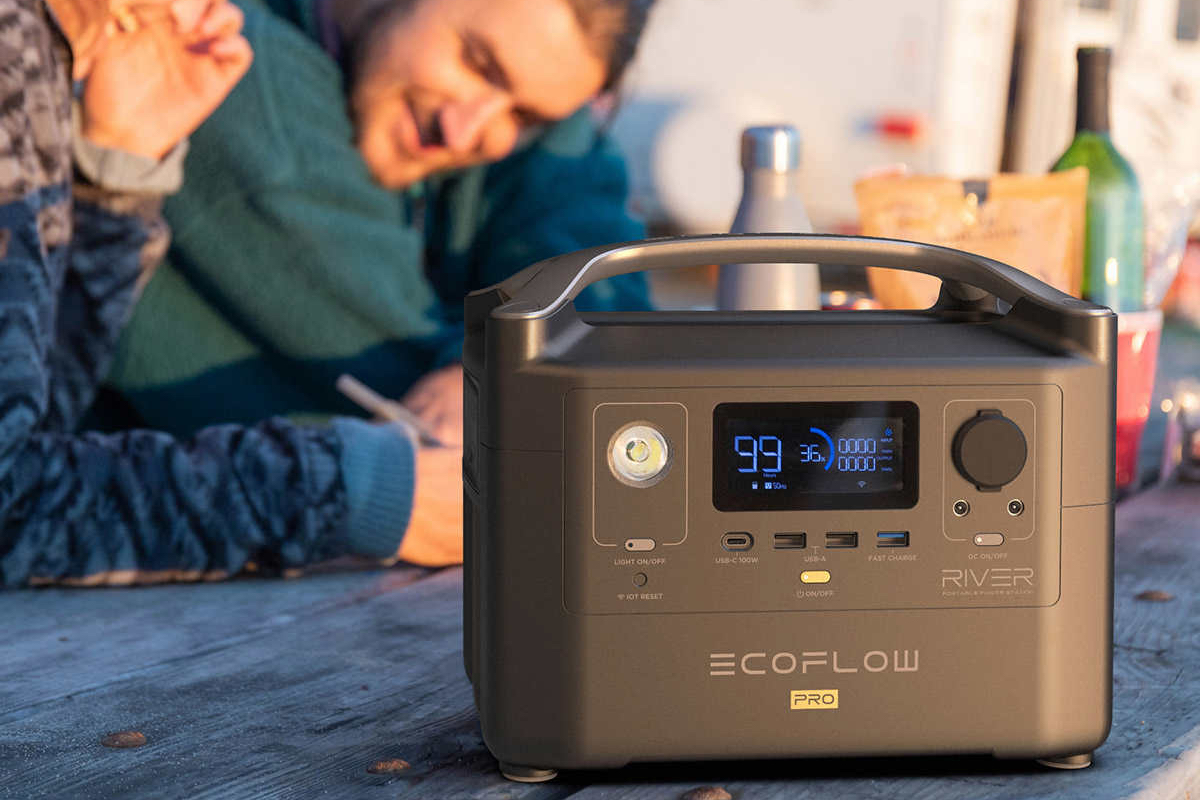
Image Courtesy of EcoFlow
Charging a Portable Power Station
Unlike a gas generator, a portable power station can’t create electricity by burning fuel. Instead, these devices charge via an external power source and store the energy in a battery pack for use at a later time. Ultimately, this is both a strength and a weakness, allowing RVers to take power with them anywhere they go but turning the power station into a giant paperweight when its battery runs out.
Fortunately, there are multiple ways to recharge most power stations. In addition to plugging them into an AC wall outlet at home, most models can also charge using the 12-volt DC port found in your RV. The majority of these devices can also be powered up using a solar panel, which is handy when used in the field.
Any power station you purchase should have at least an AC adapter to charge it from a wall outlet. Many will also include a 12-volt DC adapter for use in a car. Those that are solar compatible will have designated ports that allow solar panels to be plugged directly into the unit while charging, although panels and cables are usually sold separately.
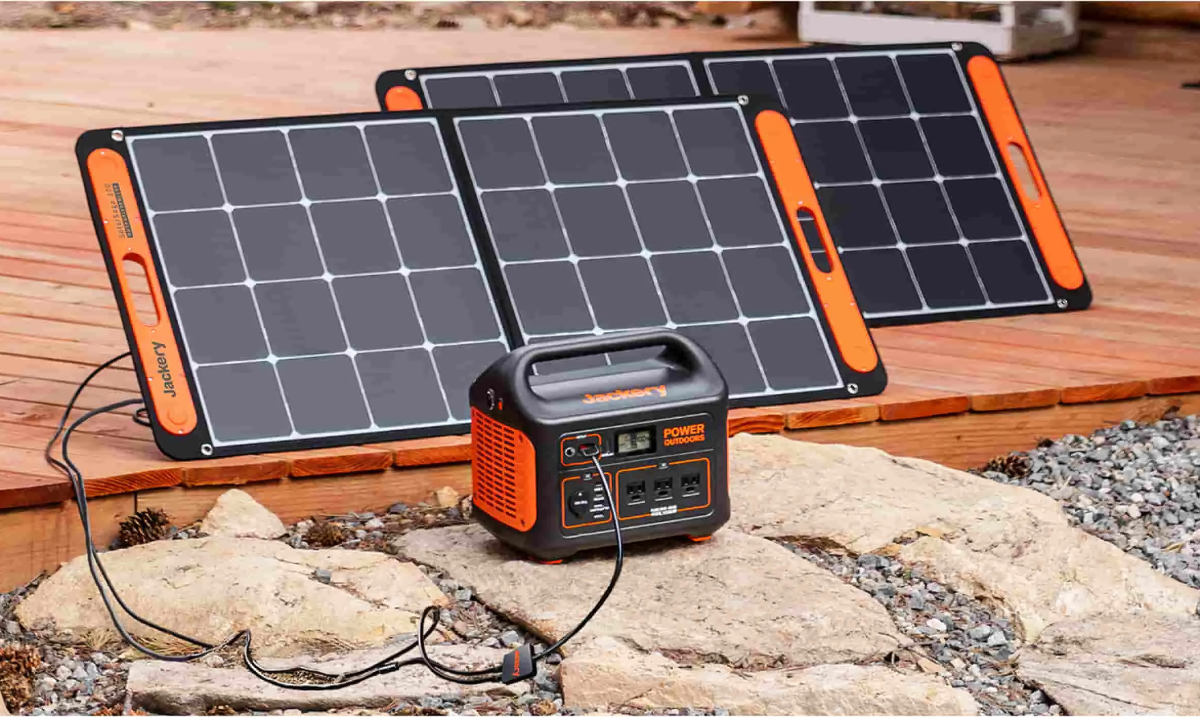
Image Courtesy of Jackery
A Solar-Powered Generator
Portable solar panels allow power stations to generate electricity anywhere the sun is shining. But that process can be slow at times, with environmental factors such as location, length of the day, and the intensity of sun all factoring into the equation. Cloud cover and shade from trees will also reduce charging speeds or prevent charging altogether.
If you plan to use a solar panel to recharge a power station at the campsite, you’ll want to place it in a location where it gets the most direct exposure to the sun. You may also have to adjust the panel’s location and angle at multiple times of the day to maximize efficiency. Even then, solar charging can require a good deal of time and patience with a power station that has a large battery. However, when it does work properly, it is an eco-friendly way to stay powered while boondocking.
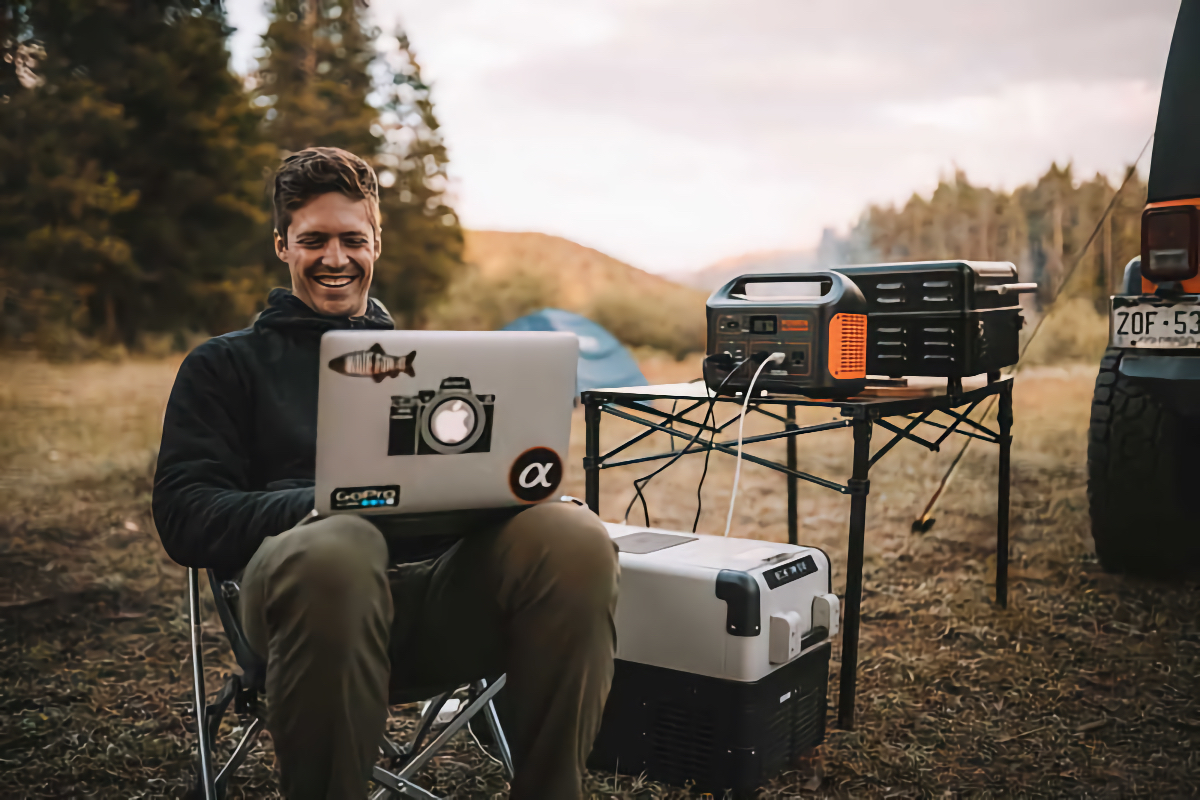
Image Courtesy of Jackery
Ports
When purchasing a portable power station, the number and type of charging ports are important things to consider. The more ports you have, the more devices you can power or charge simultaneously. Having a variety of outlets gives the unit a higher level of versatility as well, allowing you to run small appliances while also charging smartphones, tablets, and other gadgets.
Most power stations will have at least one AC outlet, which is identical to the ones found in your home. Just about anything can be plugged into these ports and draw electricity, provided the power station can produce enough watts. Smaller units may not be able to crank out enough energy for appliances that draw a lot of power, such as space heaters or microwave ovens, but higher capacity models can run them just fine.
The most common port found on any power station is USB. These are the smaller plugs used to charge devices like phones, tablets, cameras, and laptops. Newer power stations usually have a combination of USB-A and USB-C ports, which can be used interchangeably, provided you have the proper cables. USB-A is an older legacy port that is slower to charge but works with a wide variety of gadgets, while USB-A QC adds a quick-charging feature. USB-C is a newer and faster-charging standard but is still being adopted by many users. A blend of these two options helps future-proof the power station and increases its versatility.
You’re also likely to find a 12-volt DC charging port on a power station, which is the same port found in most vehicles. In a car or RV, a 12-volt DC plug powers GPS devices, dash cams, or other small electronics that you want to use while driving. This port is likely to be the one you use the least often while at the campsite, although by using an adapter, it can be converted into another AC outlet if needed.
The Best Portable Power Stations for RVing
Now that we know what to look for when shopping for a portable power station, these are the best models available today.
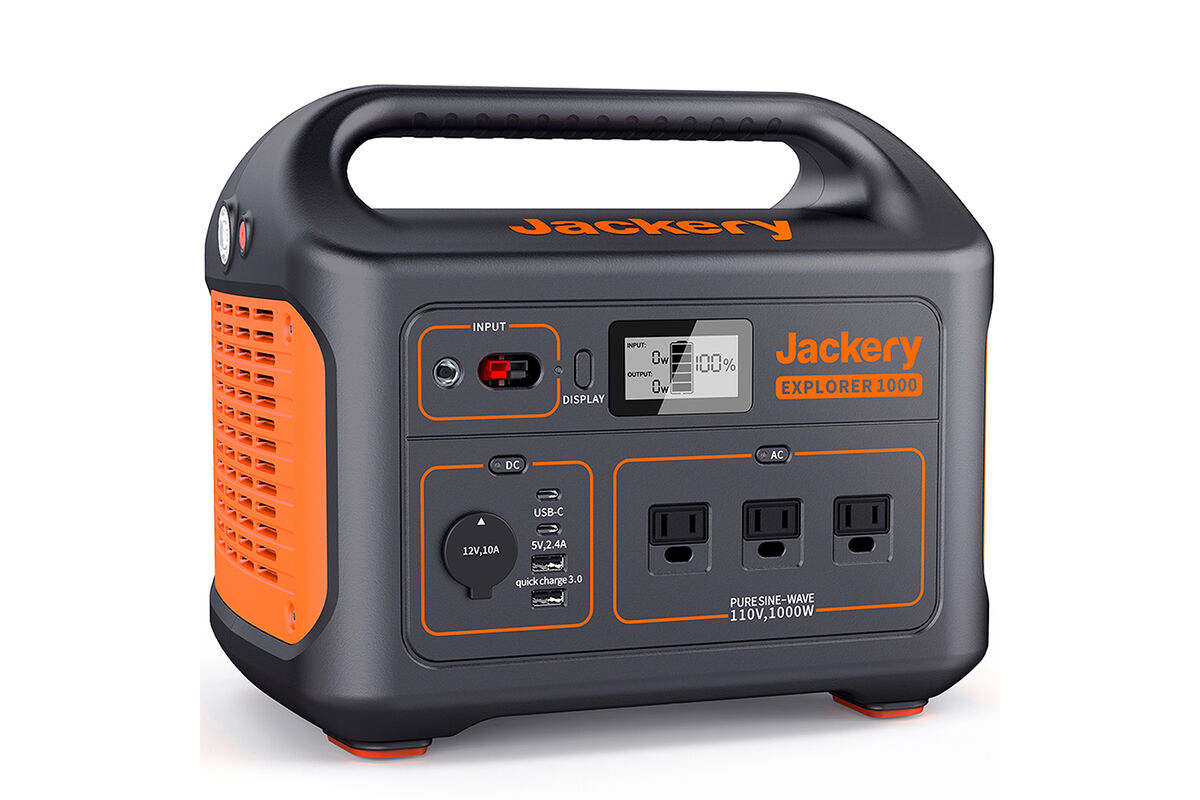
Image Courtesy of Jackery
Jackery Explorer 1000
While Jackery makes both larger and smaller portable power stations, its Explorer 1000 is the perfect option for many RVers. The unit offers 1,000 watts of continuous power and a battery that can store up to 1,002 watt-hours (Wh) of energy. That’s enough to recharge a smartphone more than 100 times and keep a mini-fridge running for up to 17 hours.
The Explorer 1000 comes with three AC outlets, a 12-volt port, and four USB ports, including two USB-C, one standard USB-A, and one USB-A QC. It features a built-in LCD that shows power input and output, as well as remaining battery life, and at 22 pounds, it is surprisingly portable. The unit is also solar compatible and can be recharged in just 8 hours using two of Jackery’s 100-watt SolarSaga panels.
Buy the Jackery Explorer 1000 at Camping World
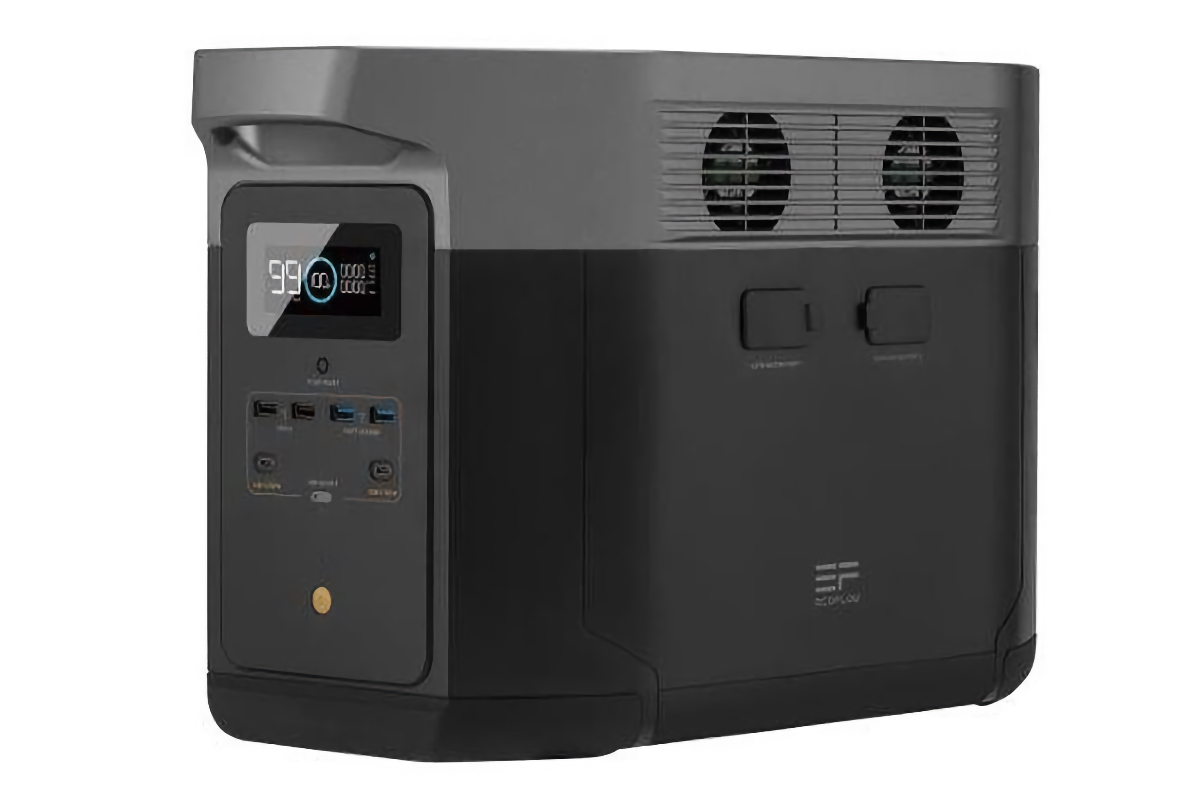
Image Courtesy of EcoFlow
EcoFlow Delta Max 2000
If you’re looking to power your entire RV, the EcoFlow Delta Max 2000 may be the power station for you. This device has a standard capacity of 2,000Wh but can be expanded to more than 6,000Wh with additional battery packs. It can also supply as much as 3,400 watts of power to a device, allowing it to run small air conditioners and space heaters.
With that much power, the Delta Max 2000 can recharge a typical smartphone more than 175 times or a laptop up to 32 times. And since it comes with 15 charging ports—including six AC and six USB outlets—you can power plenty of gadgets and appliances at the same time. The power station can even connect with dual 400-watt solar panels for speedy recharging at the campsite.
Other features include an LCD for monitoring power usage and fast-charging capabilities that can replenish the Delta’s batteries in less than two hours. The power station even comes with onboard Wi-Fi and Bluetooth connectivity, allowing users to remotely control the unit via a smartphone app. It has a fire-resistant outer shell and rubber anti-slip base to keep it firmly in place while driving.
Buy the EcoFlow Delta Max 2000 at Camping World
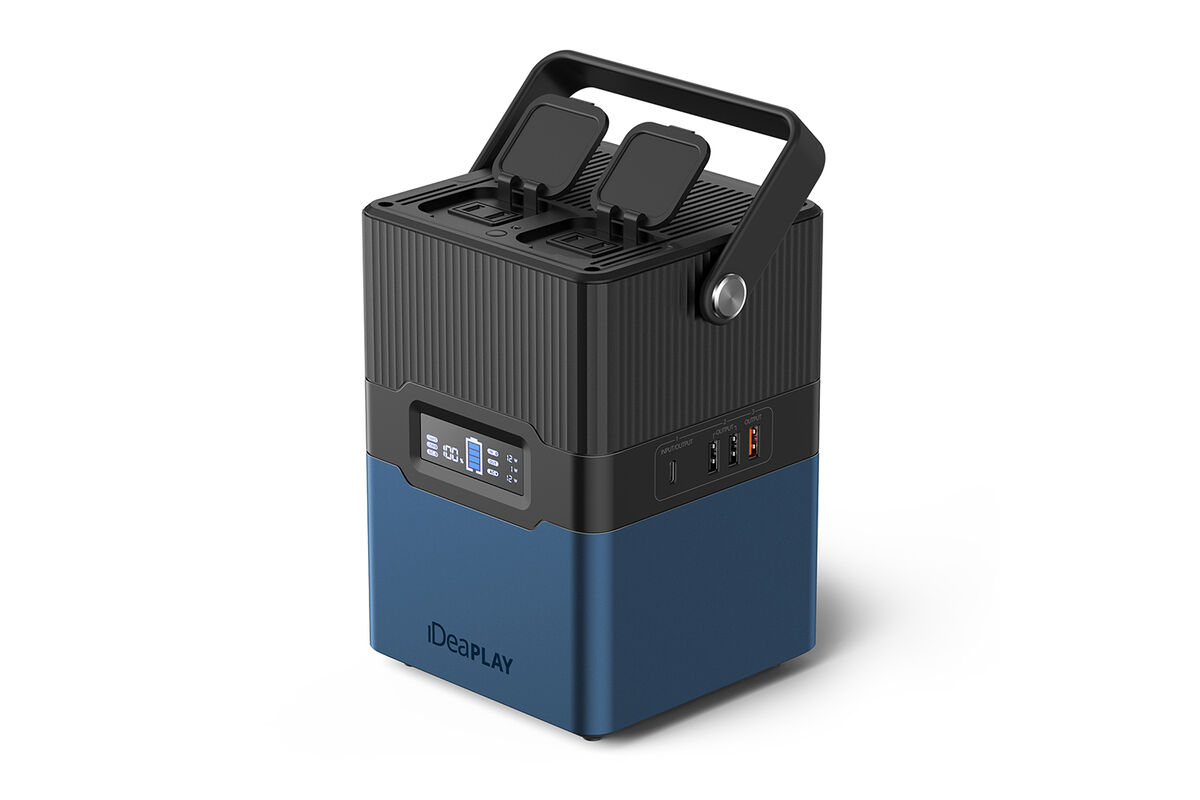
Image Courtesy of IdeaPlay
IdeaPlay BP300
When it comes to small, lightweight, and affordable power stations that you can carry with you anywhere, the IdeaPlay BP300 is an excellent choice. With a weight of just 10 pounds, this power station is designed to be ultra-portable rather than ultra-powerful. It features a 250Wh battery and an output of up to 300 watts, which is perfect for use at the campsite, where electrical outlets can be at a premium.
Despite its diminutive size, the BP300 offers plenty of charging ports. It includes two AC outlets, four USB ports (two USB-A, one USB-A QC, and one USB-C), and a 12-volt DC port. It also comes with a built-in LED flashlight and an LED screen that displays the remaining battery life and other important information. The power station is solar compatible and ships with all of the necessary cables and a carrying case.
Buy the IdeaPlay BP300 at Camping World
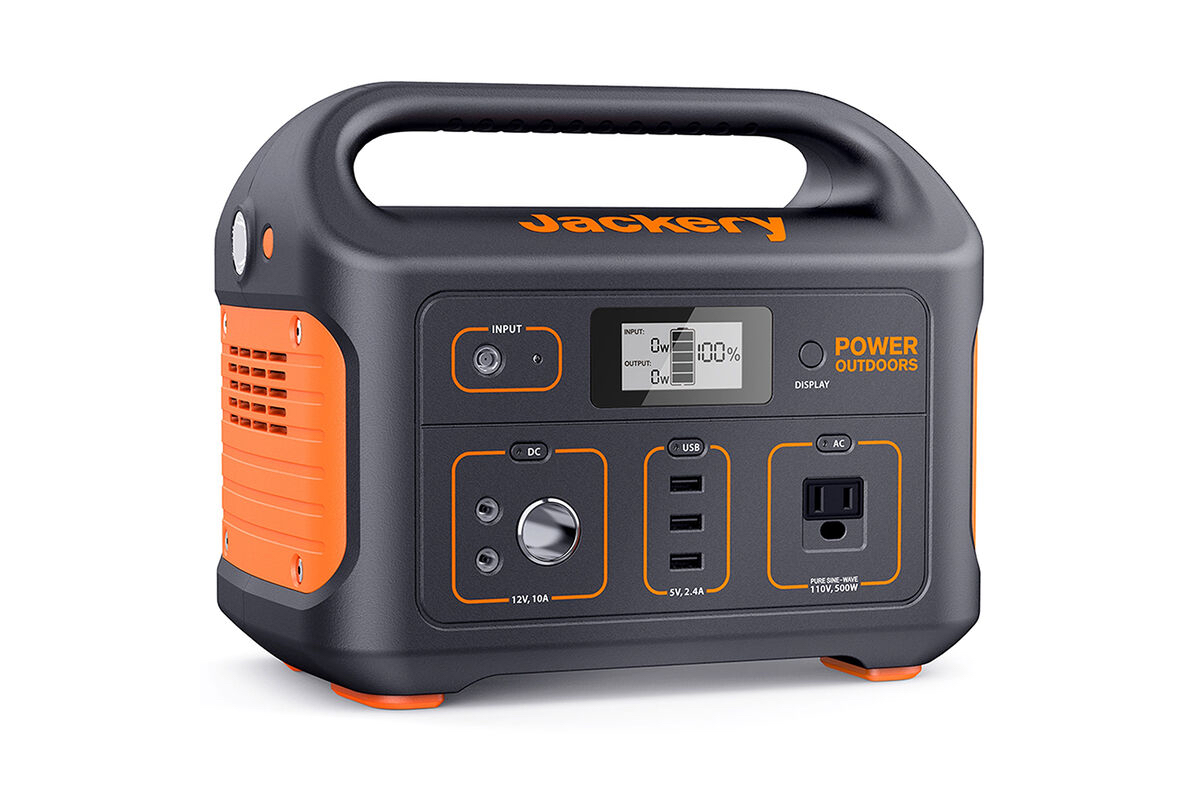
Image Courtesy of Jackery
Jackery Explorer 550
In many ways, the Jackery Explorer 550 resembles a scaled-down version of the larger, more powerful Explorer 1000. The two models have more than a passing family resemblance, although the 550 is considerably smaller and, at 13.8 pounds, more portable. But it also has fewer charging ports than the 1000, with just one AC outlet, three standard USB-A ports, and a 12-volt DC port.
In addition to its smaller design, the Explorer 550 has more modest specs than its big brother. This power station features a battery with a 550Wh capacity capable of producing 500 continuous watts of power. That’s enough to run a blender for 1.5 hours, a mini-fridge for nearly 40 hours, or recharge a smartphone more than 50 times. It is also solar compatible and rugged enough to take to the beach, the campsite, or anywhere else you need portable power.
The Explorer 550 is an excellent option for anyone looking for a lightweight, go-anywhere power source that isn’t too large or too heavy. While it isn’t powerful enough to run your entire RV, it is perfect for use in camper vans and at remote campsites. It also delivers a lot of features and reliability for the price.
Buy the Jackery Explorer 550 at Camping World
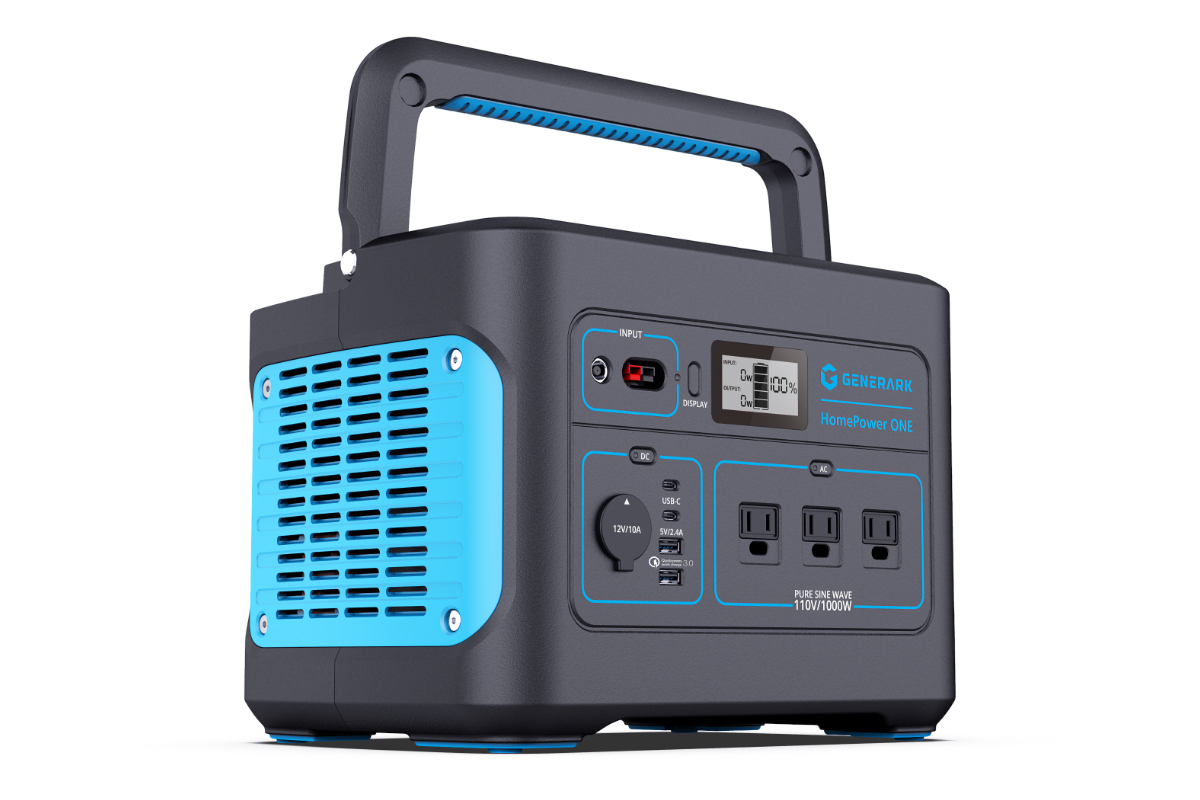
Image Courtesy of Generark
Generark HomePower One
With the HomePower One, Generark offers a power station that delivers plenty of features and performance at an attractive price. This models ships with a 1,002Wh battery and a continuous output of 1000 watts, allowing it to run a wide variety of small appliances, laptops, and electronic devices. That’s enough juice to keep a fan running for 2-3 days or a CPAP machine operating for up to a week.
The power station comes equipped with three AC wall outlets, two USC-C ports, One standard USB-A, a USB-A QC port, and a 12-volt DC port. It can be recharged via AC, DC, or solar and includes a built-in LCD panel for monitoring battery life. A durable handle makes it easy to carry the 23-pound HomePower One to where you need it. That same handle folds out of the way when not in use, making the power station easier to store.
Buy the HomePower One from Generark
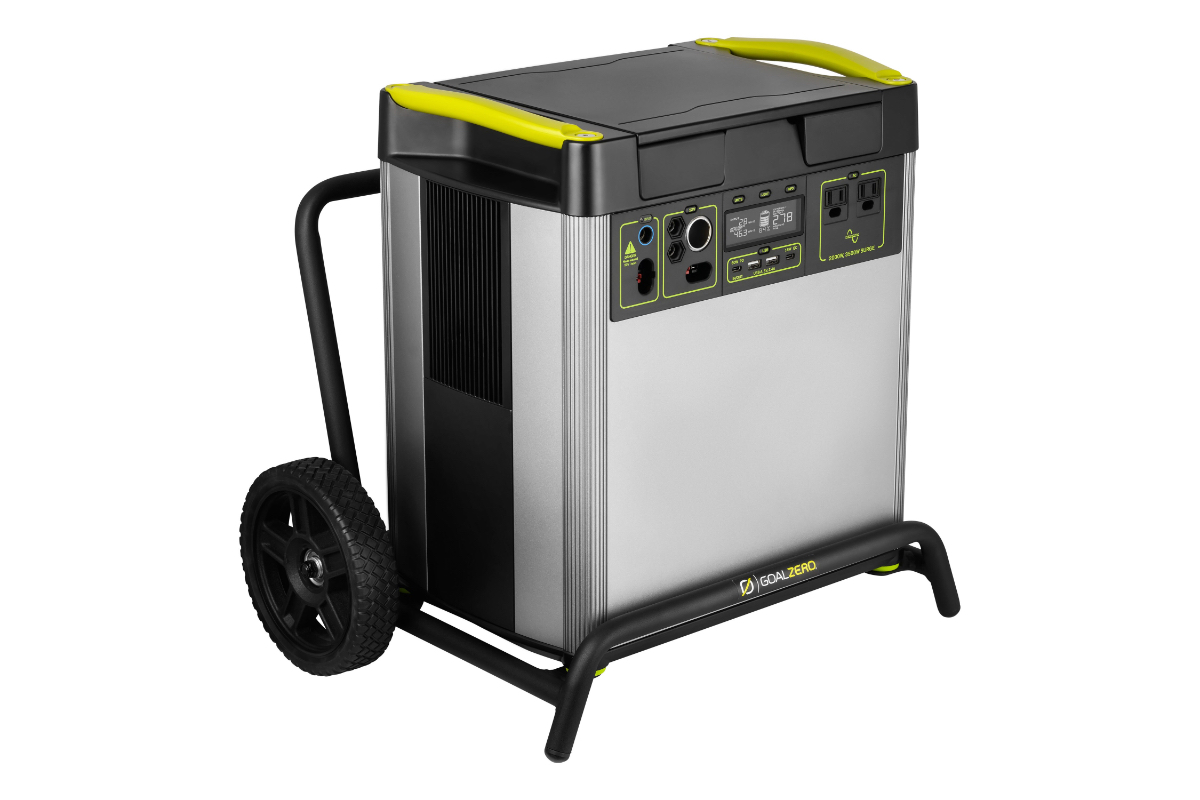
Image Courtesy of Goal Zero
Goal Zero Yeti 6000X
Built to replace a gas generator, the Goal Zero Yeti 6000X packs plenty of power and durability into a relatively compact package. The unit provides a steady 2,000 watts of power (120 volts) and can surge up to 3,500 watts if needed. Additionally, its battery pack supplies 6,071Wh of energy, which is enough to run a full-size residential refrigerator for 85 hours or a 42″ LED TV for 60 hours. It can also recharge a laptop 120 times or most phones over 500 times.
The Yeti 6000X is powerful enough to serve as a backup power source for an entire home or supply energy to a large RV. It can be recharged from the wall, a 12-volt DC car port, or by solar, and includes seven outlets, including two AC plugs, two USB-A and USB-C ports, and a 12-volt DC port. At 106 pounds, it is cumbersome, however, which is why it is built on wheels and comes with an integrated handle to help move it around.
Goal Zero has long-been an industry leader in portable power stations. The company’s products have excellent build quality and offer top-notch performance. Its products stand above most of the competition in terms of design, quality of components and materials, and battery technology. The Yeti 6000X is another example of that.
Buy the Yeti 6000X from Goal Zero
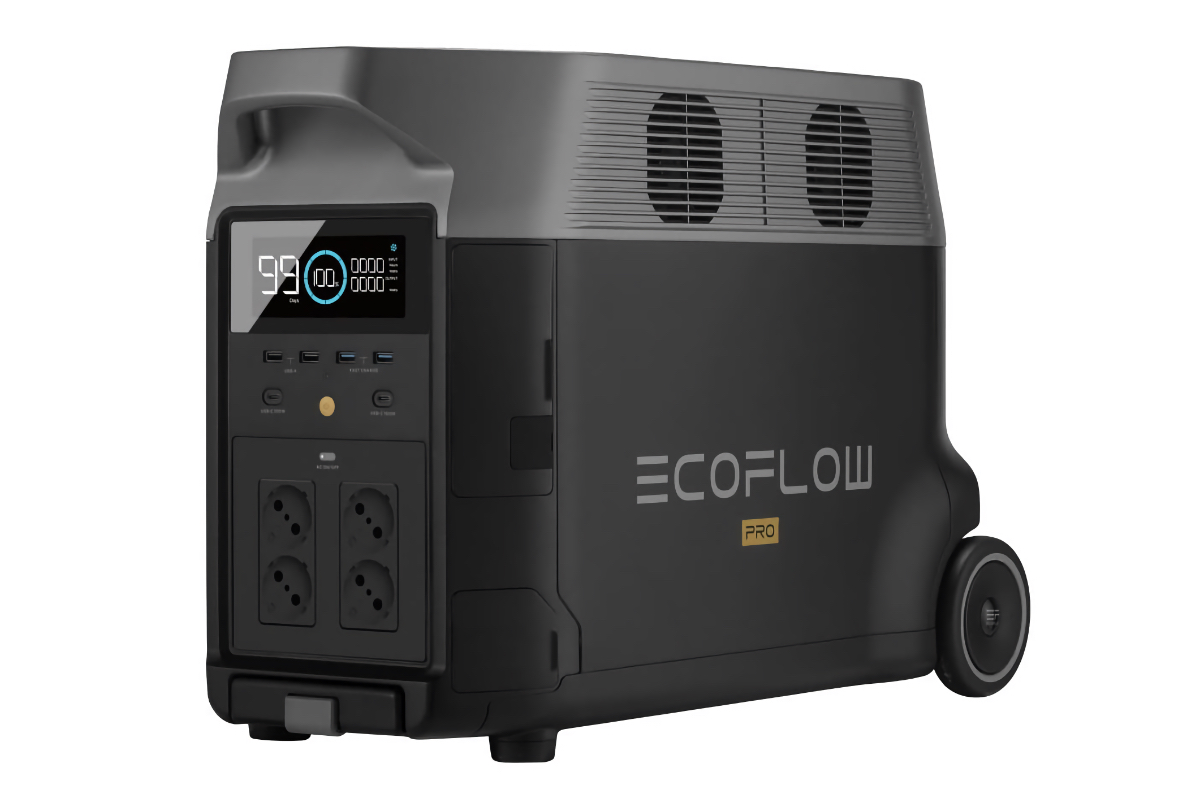
Image Courtesy of EcoFlow
EcoFlow Delta Pro
Like the Goal Zero Yeti 6000X, the EcoFlow Delta Pro is designed to replace traditional gas-powered generators completely. The unit ships with a 3,600Wh battery, but like the smaller Delta Max 2000, users can expand its capabilities by connecting multiple power stations to reach as much as 25,000Wh. And with a maximum output of up to 4500 watts, the Delta Pro can power just about anything you plug into it, including HVAC systems, CPAP machines, and hairdryers.
As with its smaller sibling, the Delta Pro has 15 different charging ports, allowing numerous gadgets and appliances to run simultaneously. Those ports include five AC outlets, a 12-volt DC port, and six USB ports (two USB-A, two USB-A QC, and two USB-C). It even comes with an EV charging port to supply power to an electric vehicle.
The EcoFlow Delta Pro has the added benefit of being able to connect directly back into your home electrical system. This allows it to serve as a backup power supply during power outages. But the unit does weigh nearly 100 pounds, which is why it comes with built-in wheels and a handle.
Buy the Delta Pro from EcoFlow
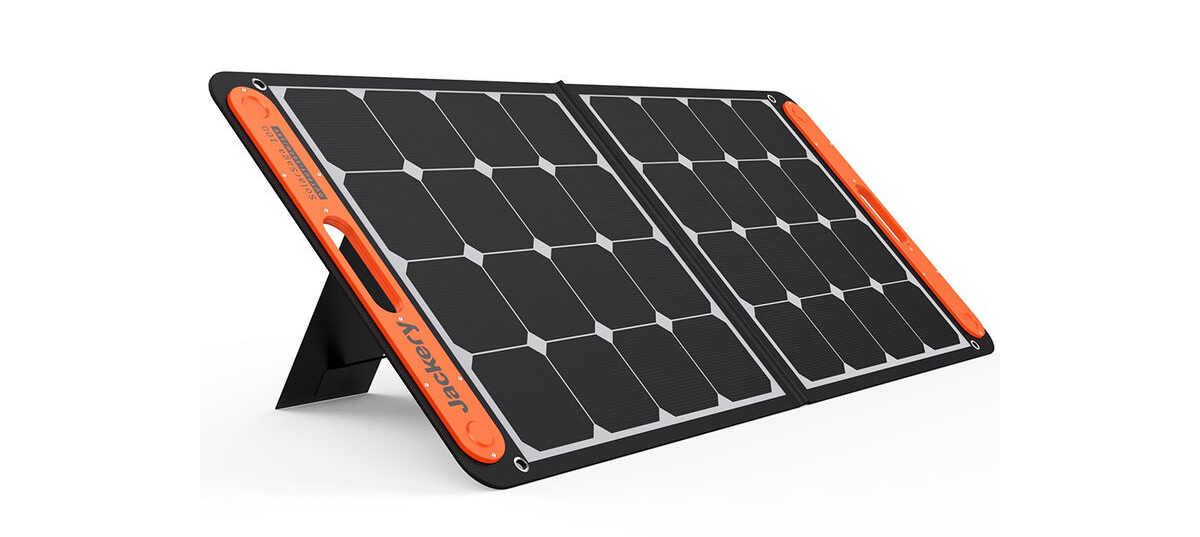
Image Courtesy of Jackery
Adding a Solar Panel
Most companies that manufacture power stations also offer solar panels to keep them charged while away from home. Generally speaking, those solar panels use standardized ports that are compatible with most power stations. Still, a few companies use proprietary ports and cables, which can lead to some confusion.
For simplicity’s sake, it is easiest to buy a solar panel made by the same manufacturer as the power station. Some companies even sell the two products together in a bundle at a reduced price.
If you want to purchase a solar panel for charging in the field, here is a list of the best options available:
Jackery
- SolarSaga 100 (100W)
- SolarSaga 200 (200W)
EcoFlow
Goal Zero
- Nomad 100 (100W flexible)
- Nomad 200 (200W flexible)
- Boulder 100 (100W glass)
- Boulder 200 (200W glass)
- Boulder 300 (300W glass)
When properly set up, a solar panel and portable power station will provide a new level of independence when boondocking and camping off the grid. Enjoy that freedom.

Kraig Becker is a writer in the RV, outdoors, and adventure travel space. Over the course of his career he has contributed to such outlets as Popular Mechanics, Outside Online, Business Insider, TripSavvy, Digital Trends, GearJunkie, The Adventure Blog, and countless others. And avid runner and cyclist, he enjoys camping, hiking, mountain biking, kayaking, and just about any other outdoor activity. His travels have taken him to seven continents and on many amazing adventures.



